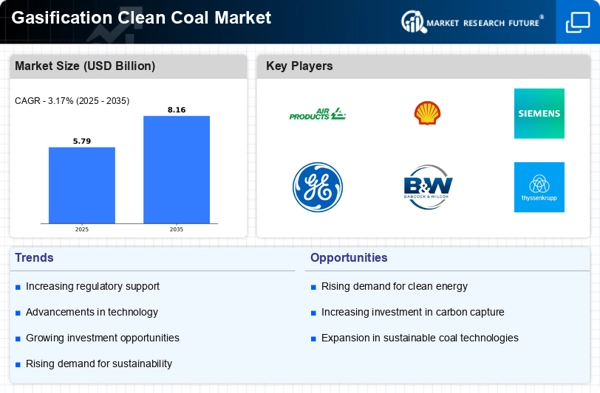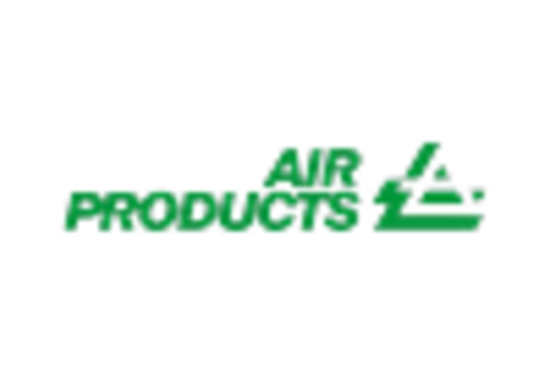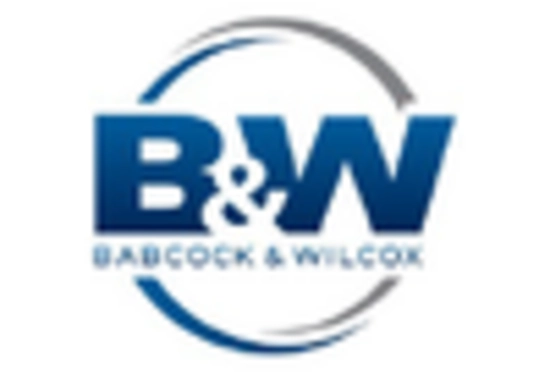Rising Energy Demand
The increasing The Gasification Clean Coal Industry. As economies expand, the need for reliable and sustainable energy sources intensifies. According to recent data, energy consumption is projected to rise by approximately 30% by 2040. This surge necessitates innovative solutions, and gasification of clean coal presents a viable option. It allows for the efficient conversion of coal into syngas, which can be utilized for electricity generation and as a feedstock for chemicals. The Gasification Clean Coal Market is thus positioned to benefit from this growing demand, as it offers a cleaner alternative to traditional coal usage, potentially reducing greenhouse gas emissions while meeting energy needs.
Energy Security Concerns
Energy security remains a significant concern for many nations, driving interest in the Gasification Clean Coal Market. Countries reliant on imported fossil fuels are increasingly looking for domestic energy solutions to mitigate risks associated with supply disruptions. Gasification of clean coal offers a pathway to utilize local coal resources while ensuring energy independence. By converting coal into syngas, nations can produce electricity and other valuable products without being overly dependent on foreign energy supplies. This strategic advantage positions the Gasification Clean Coal Market as a critical component in national energy strategies, potentially leading to increased investments and development.
Environmental Regulations
Stringent environmental regulations are increasingly shaping the landscape of the Gasification Clean Coal Market. Governments worldwide are implementing policies aimed at reducing carbon emissions and promoting cleaner energy sources. For instance, regulations such as carbon pricing and emissions trading schemes incentivize the adoption of cleaner technologies. The gasification process, which converts coal into syngas, significantly lowers emissions compared to conventional coal combustion. This regulatory push not only encourages investment in gasification technologies but also enhances the market's appeal to stakeholders seeking compliance with environmental standards. As a result, the Gasification Clean Coal Market is likely to experience growth driven by these regulatory frameworks.
Technological Innovations
Technological advancements play a crucial role in the evolution of the Gasification Clean Coal Market. Innovations in gasification technologies, such as improved reactor designs and enhanced catalysts, are making the process more efficient and cost-effective. Recent studies indicate that advancements in integrated gasification combined cycle (IGCC) systems can achieve efficiencies exceeding 45%. These innovations not only reduce operational costs but also enhance the environmental performance of coal gasification. As technology continues to evolve, the Gasification Clean Coal Market is expected to attract further investment, fostering a competitive landscape that prioritizes efficiency and sustainability.
Investment in Clean Energy Technologies
The growing trend of investment in clean energy technologies is a vital driver for the Gasification Clean Coal Market. As stakeholders recognize the importance of transitioning to sustainable energy systems, funding for clean coal technologies is on the rise. Reports indicate that investments in clean coal technologies could reach billions of dollars in the coming years, driven by both public and private sectors. This influx of capital is likely to accelerate research and development efforts, leading to more efficient gasification processes and broader adoption of clean coal solutions. Consequently, the Gasification Clean Coal Market stands to gain from this investment momentum, fostering innovation and market expansion.


















Leave a Comment